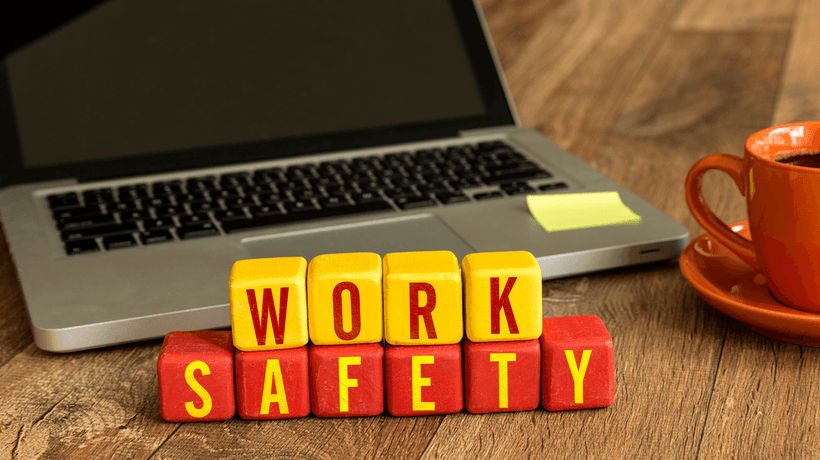Workplace Safety Training Implementation Mistakes To Avoid
Safety training isn’t usually a fan favorite. In fact, employees might rather get a root canal than sit through one more hour-long lecture. Or read yet another training manual that’s packed with technical jargon and outdated references. However, there are ways to engage employees and highlight the importance of compliance without going over budget. The secret is to avoid the most common workplace safety training implementation pitfalls so that staffers have a chance to connect, immerse themselves in the subject matter, and apply what they’ve learned without putting anyone in peril. Fortunately, we’ve compiled all the top workplace safety training pitfalls below and tips to prevent them in the first place so that you can inspire, educate, and—dare I say—entertain your team, even in times of crisis.

1. Prioritizing Theory Over Practice
Many organizations make the crucial mistake of letting policies overshadow real-world problems, like how employees should apply the safety protocols in the workplace and the practical benefits. You can try to bombard them with countless rules, regulations, and codes of conduct in the hopes that something sticks. Or you can include simulations, examples, and stories that drive the point home. Or relatable activities that show them how safety training topics translate on the job and why it’s so important to comply.
2. Not Keeping Up With The Times
I’m not just referring to outdated compliance content. Maybe you’ve let your toolbox fall into disrepair. Or your delivery approach is somewhat dated, and mobile accessibility is not an option. You must keep up with the times to prep your team for modern challenges and mitigate compliance risks. That said, resources should reflect the latest protocols so that employees know what’s expected of them, instead of relying on outdated or ineffective information. For example, your updated safety training courses might include new slip-and-fall hazards and ergonomic exercises.
3. Depersonalizing The Process
A common workplace safety training implementation mistake is deploying generic content and assuming everyone has the same needs, for example, by creating one-size-fits-all online training resources that contain all the essential policies but lack emotional connectivity. Compliance must strike a balance between personal and professional to achieve the best results. Employees need online training resources that resonate with them and their job responsibilities. But they must also understand the importance of following the rules and reducing workplace risks. A perfect example of this is safety training simulations. They contain relatable characters, dialogue, and compliance challenges. Staffers can put their knowledge into practice and test out different approaches. However, the simulation also highlights real-world repercussions so that employees can identify pain points discreetly.
4. Setting An Unrealistic Budget
You have a ballpark figure of how much you want to spend on safety training courses and a max limit. Unfortunately, it takes more than rough estimates to prevent overspending. You must set a realistic budget that includes internal and outsourcing tasks, as well as necessary tools, curated content, and ongoing maintenance. How much should you allocate for eLearning authoring tools? Does the vendor charge extra for advanced support services? Finally, leave a little wiggle room for unexpected expenses to avoid project delays.
5. Underestimating Development Time
Creating workplace safety training is no walk in the park. It takes time, resources, and niche expertise to create relevant resources for your organization. One of the most efficient ways to calculate a development timeframe is to divide it into phases. Each stage of the project consists of content creation, revisions, and needs analysis. Another way to streamline scheduling is to storyboard the process from start to finish. Include deliverables and tasks. Then add a little time buffer for unexpected delays. Even if you choose to outsource, safety training courses take time. Granted, off-the-shelf solutions are ready to launch, and you only need to consider implementation time.
6. Overlooking Compliance Risks
You think you’ve mapped out all the compliance issues for every department. Then you realize that risks are hiding in plain sight. Issues you need to incorporate into your safety training courses to prep your team and uphold company standards. Gather your team leaders so they can provide you with detailed risk analysis for their departments. In addition, conduct employee surveys and assessments to disclose additional compliance gaps and everyday hazards. For example, half of your service team is unaware of evacuation procedures or of how to handle a customer injury.
7. Not Outsourcing When You Should
Outsourcing isn’t a last resort. In fact, most organizations underestimate the benefits of hiring a third-party provider or don’t outsource as often as they should. Evaluate all the safety training tasks and then create two piles. One involves all the deliverables your team can handle in-house. The other covers content provider projects that require external expertise and tools. The deciding factor is ROI. Can your L&D department develop content cost-effectively? Do they have the time and necessary talents? Or is it best to hire a vendor who specializes in workplace safety training and works within budget?
Are you guilty of these safety training faux pas? Don’t worry, there’s still time to bounce back and launch a new and improved compliance program. In fact, acknowledging the problem is the first step to a successful relaunch. Conduct a Training Needs Analysis to identify the main sticking points. Then brainstorm with your team to devise a plan of action. You can also hire an outsourcing partner to tackle the TNA and safety training content development. Many vendors offer storyboarding, risk assessment, and other niche training solutions to help you streamline your strategy.
Health and safety training should be high on your list of L&D priorities, now more than ever. If you want to find everything you need in order to launch an effective safety training strategy for your organization, download the eBook Safety Training Success For SMBs: How To Prep Your Team For A Post-Pandemic Workplace and benefit from its valuable insights and best practices.








